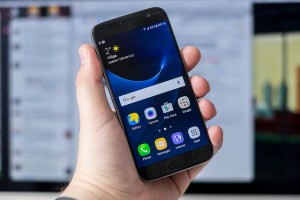The world is at our fingertips, thanks to the presence of smartphones and mobile application development companies who keep on coming up with innovative mobile apps that make life easier. There are a multitude of mobile apps available in the Google Play and Apple Stores to cater to different user needs. All this has an impact on the world as a whole. Many companies are looking forward to developing their own mobile applications so that they can better communicate and sell their products to their target audience.

Your app should aim to meet the primary needs of the user or the business you are developing the application for | Photo: Kārlis Dambrāns (Flikr)
The following are some quick tips that a business or developer embarking on mobile application development efforts should keep in mind.
Ease of use
Even though almost half of the world population now own smartphones, it does not necessarily mean that that everyone is an expert at using them. Your application should be easy to use and created in such a manner that they intuitively serve their assigned objective. Difficult to use applications often puzzle users and are abandoned or deleted.
Create an offline experience
Sure your home and office sure have reliable WI-FI, but away from there the user of your application has a completely different experience. Sometimes, the network is slow; sometimes there is no network at all. Perhaps your app user is on a camping trip in a remote area. Or, maybe, they are on a flight and they don’t want to pay for WI-FI. That is why you need to think ahead about how an application works in the offline mode or when Wi-Fi isn’t available. You should attempt to provide, as much as possible, the same user experience even on spotty network areas.
You should plan on your app being available on as many devices as possible
An increasing number of mobile application development companies recognize that users no longer stick to a single device. Today, devices of all kinds – smartphones, tablets, phablets, wearables, etc. – are pouring into the market. For this reason, developers need to make sure their application is available across multiple devices and platforms.
Don’t pack in too many features
As a developer, your app should only aim to meet the primary needs of the user or the business you are developing the application for. Focus only on your target audience while building your app. Good user experience means doing more with less. Anything that the user will find difficult to use will not sell and this means wasted time, money and effort on your part.
Test your application
The main testing phase in mobile application development comes after the application has been coded and before the launch. Most of negative app reviews are associated with bugs that were not picked up before the launch. So it is important to spend a decent amount of time testing the application throughout the whole process — to ensure its quality.
These tests are absolutely important in order to ensure that you are entering the market with a strong product. The application may not pass your testing the first time but if you run it through the cycle of tests a few times and make the necessary tweaks and improvements, the application will eventually hold strong.
Conclusion
Creating your first mobile application can be a challenging experience. It requires a great deal of technical, designing and development knowledge. However, the above tips can give you a great start. If you start in the right direction, you will definitely be able to create great applications that will serve users and companies better.




